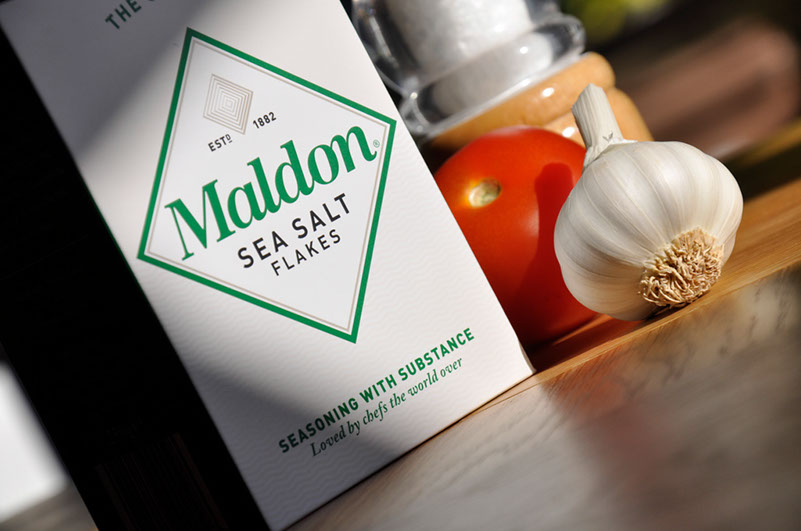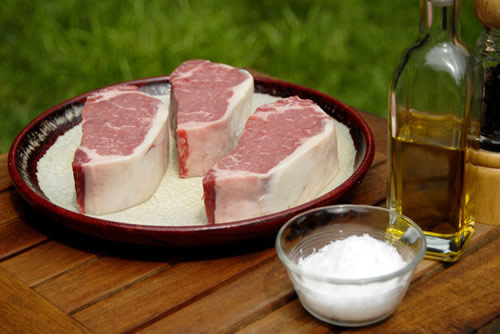Talk about multitasking! Salt has been in use since ancient times and has, some say, 14,000 distinct uses. It is our oldest spice, and yet, so much more.
Earliest discoveries of salt-production plants date back to more than 8,000 years to Romania and China. Ancient Egyptians traded salted foods to the Phoenicians in return for cedar, glass, and a dye for the color purple, among other precious goods.
Salt is old, and seemingly universal. Salt water and salt deposits are found worldwide. Deposits have been discovered on Mars, giving scientists a strong indication that some form of life may have existed there—and, if so, perhaps elsewhere.
From the prehistoric cave-dwellers to the Roman Empire to Mahatma Gandhi, salt has tantalized our palates, preserved our food, and been used as a cleaning agent, in health products, as a water softener, a de-icer, and even a political football and a reason to go to war.
For living beings, salt is something we can’t live without. A little used in moderation can make flavors burst into brilliance while, in extreme cases, too much can kill you.
Subjects of Salt: History and Science
Depending on its origin—the sea or land—salt comes in many shapes, sizes, and colors but can be reduced to a single, common crystalline structure. On the Periodic Table of Elements, pure salt’s chemical name is NaCl—sodium chloride. In nature, salt can occur in combination with other minerals. And, in modern production, table salt often contains such non-salt additives as anti-caking agents, iodine, fluoride, and others.
Salt has a fascinating history, and much of it is captured expertly on the website of Artisan Salt Company in Woodinville, WA. You can find some of their products in Lobel’s Pantry. Or if you’re thirsty for more on the subject of salt, you can use the word salt as your only search term and Google will return 559,000,000 results in 0.26 seconds
Salt Meets Meat
But let’s get down to the matter at hand: the role salt plays in giving you the ultimate steak-eating experience. At the moment, in this consideration, that is salt’s calling—its highest purpose.
Rule #1: When using salt to prepare the perfect steak, do not use table salt. Use kosher or sea salt.
Salt, oil, and pepper, when combined with the steak’s own juices and searing heat, produce the mesmerizing caramelized crust that juxtaposes the crunchy exterior with a smooth, yielding, and juicy interior. That’s what makes a great steak a great eating experience. Salt fuses with the other elements to make a crunchy, golden cocoon within which the beef cooks to a perfect doneness and perfect texture and oozes juiciness and flavor.
In preparing the steak for indoor or outdoor cooking, salt should go on last—just before the meat hits the heat. Otherwise, leaving the salt on for longer will leach moisture from the steak and negatively affect its juiciness and flavor. Using fine-crystal table salt will also leach out precious moisture.
To prepare a steak a little ahead of time, you can apply the olive oil, season with pepper, and leave to rest for a while before applying the salt at the last minute. When the steak hits the heat, juices and sugars from within the meat are pulled to the surface where they mingle with the dissolving salt, the pepper, and hot oil to create an unforgettable crust.

Selecting a Salt
Different types of culinary salt have different types of hardness ranging from the types of salt that must be crushed in a grinder—grey salt, for example—to soft, supple salts that can be crushed to a powder with no more than fingertip pressure.
In this latter category, Maldon Sea Salt from Great Britain is known for its soft texture, pyramid crystal, and delicate, clean taste without chemical overtones. Considered by many to be the finest culinary salt in the world, Maldon Sea Salt is the ideal complement to meat in flavor and in forming the desirable crust on seared cuts. Pink-hued Murray River salt from Australia also has a soft crystal and pure salty flavor.
What is your go-to mise en place salt?




Leave Your Response